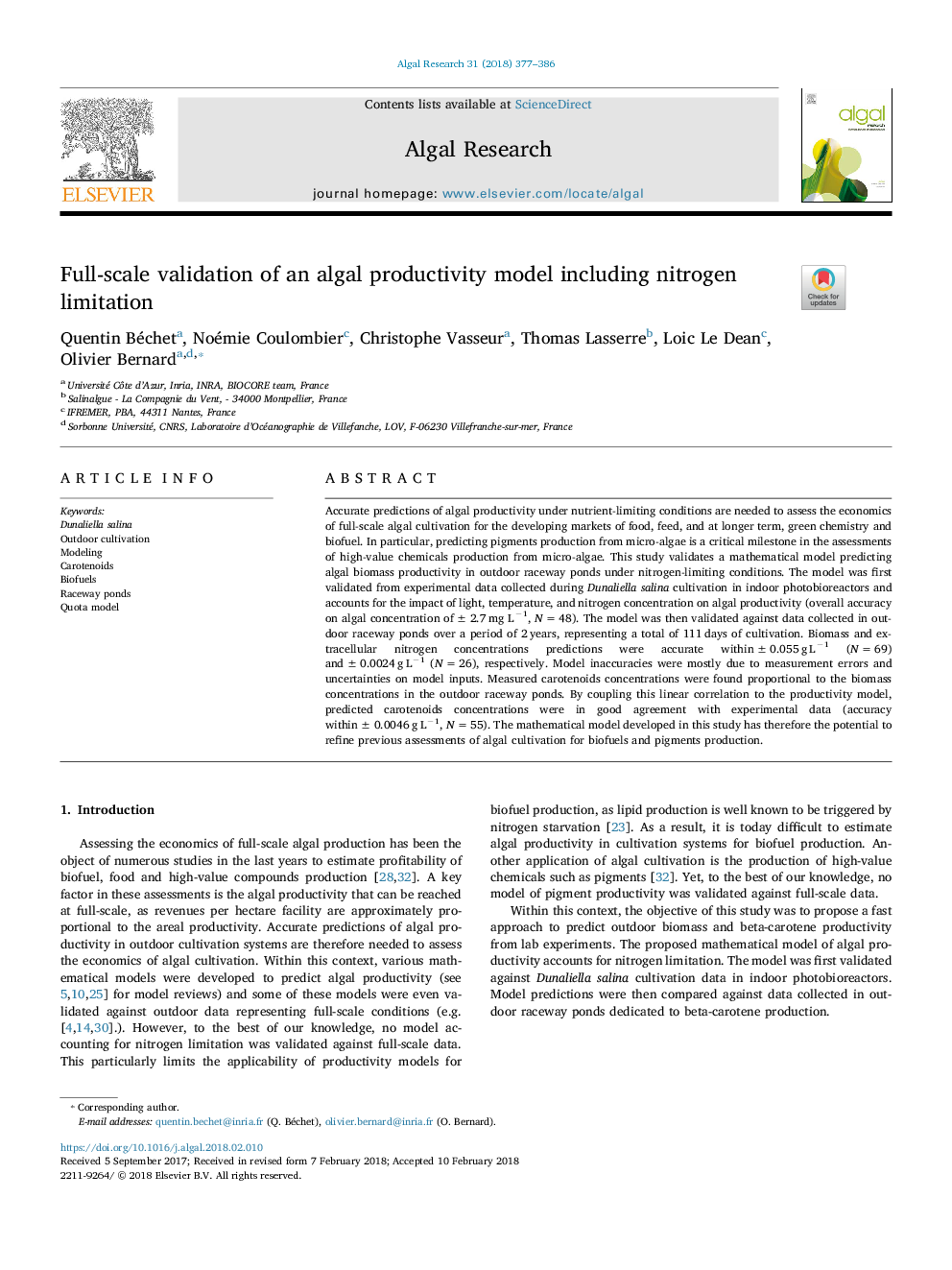ترجمه فارسی عنوان مقاله
اعتبار سنجی کامل در مدل بهره وری جلبک از جمله محدودیت نیتروژن
عنوان انگلیسی
Full-scale validation of an algal productivity model including nitrogen limitation
| کد مقاله | سال انتشار | تعداد صفحات مقاله انگلیسی |
|---|---|---|
| 95491 | 2018 | 10 صفحه PDF |
منبع

Publisher : Elsevier - Science Direct (الزویر - ساینس دایرکت)
Journal : Algal Research, Volume 31, April 2018, Pages 377-386

